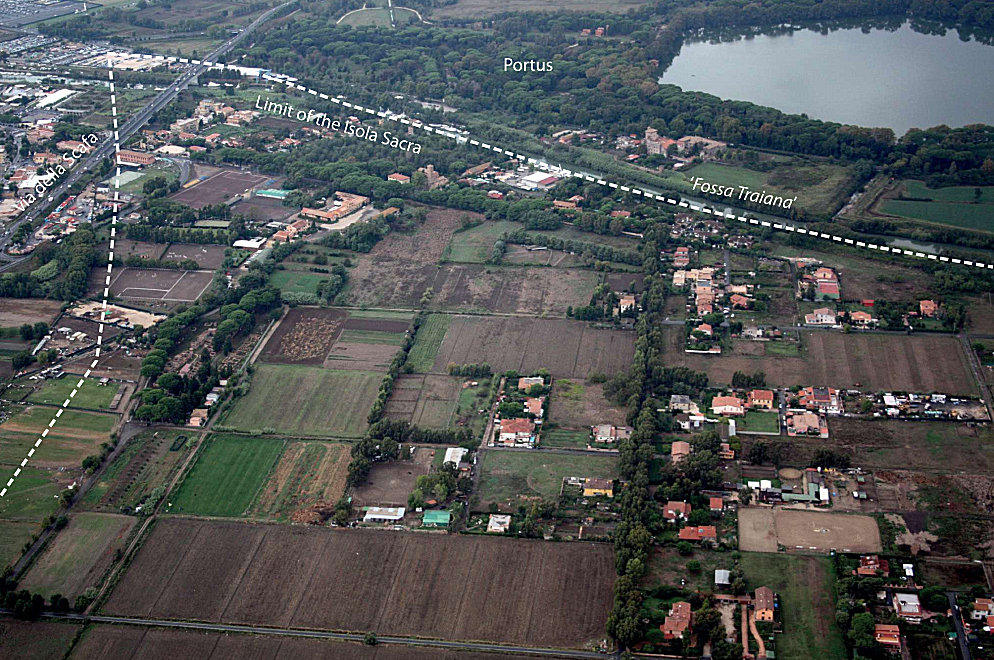Isola Sacra - Introduction
Between Portus and Ostia is the Sacred Island, the Isola Sacra. The island was created by the Tiber and the Fossa Traiana, the canal dug to the south of Portus by Claudius (in spite of its name). The name Isola Sacra is mentioned for the first time in 537 AD, albeit in Greek, by Procopius: Hiera Nesos (De Bello Gothico V, XXVI, 5). Perhaps the name was prompted by the presence of the Basilica of Saint Hippolytus on the north part. In the early fourth century, in the Liber Pontificalis, the island is called Assis, "axle".

Map of the Isola Sacra in the Imperial period. Image: Keay 2020, fig. 7.1.
Today the island is much wider than it was in antiquity, because the shoreline moved several kilometers seaward, due to silt adduced by the Tiber. Also, the bulge in the south-east part no longer forms part of it: it was cut off in 1557, when the Tiber changed its course and continued from north to south.
In the fifth century Aethicus of Istria describes the Isola Sacra as follows:
| in duobus ex uno effectus insulam facit inter portum urbis et Ostiam civitatem, ubi populus Romanus cum urbis praefecto vel consule Castorum celebrandorum causa egreditur sollemnitate iocunda. Insula vero, quam facit inter urbis portum et Ostiam civitatem, tantae viriditatis amoenitatisque est, ut neque aestivis mensibus neque hiemalibus pasturae admirabiles herbas dehabeat; ita autem vernali tempore rosa vel ceteris floribus adimpletur, ut pro nimietate sui odoris et floris insula ipsa Libanus almae Veneris nuncupetur. | With two branches originating from one the Tiber creates an island between the harbour of the city and the city of Ostia, which is visited by the people of Rome together with the Praefectus Urbi or a consul to worship the Dioscures with a happy feast. And indeed, the island, that the river creates between the harbour of the city and the city of Ostia, is so green and lovely, that neither in the summer nor in the winter wonderful vegetation is absent from the pasture; and in the springtime it is filled with so many roses and other flowers, that the island is even called garden of the nourishing Venus, because of the abundant vegetation and wonderful odours. |
| Aethicus Ister, Cosmographia, Riese, Geographi Latini minores, p. 83. | |

Aerial view of the northern part of the Isola Sacra, looking northwards towards Portus. Photo: Keay 2020, fig. 1.3.

Aerial view looking south-west across the Isola Sacra. Photo: Keay 2020, fig. 1.4.